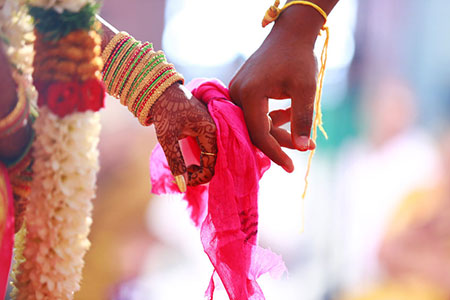handfasting
The Symbolism Of Wedding Ribbons And Cords
 In a recent reading, I had visions of a wedding and a shotgun! I did my best to diplomatically convey what I was seeing to the client. I also mentioned how I saw lots of colored ribbons, and a rather large gathering of people of all ages and cultures.
In a recent reading, I had visions of a wedding and a shotgun! I did my best to diplomatically convey what I was seeing to the client. I also mentioned how I saw lots of colored ribbons, and a rather large gathering of people of all ages and cultures.
He laughed, and said that two years ago, he felt a strong urge for himself and his partner to get married. They both came from large families and wanted to make sure that certain ailing, elderly members would still be able to attend and join in the celebration.
He also said he was so glad spirit prompted them to marry sooner than later, because the pandemic would have prevented not just the large gathering of guests from attending, but also many from traveling from various corners of the world as they had done. Apparently, the ribbons I saw related to the traditional pagan handfasting they had chosen as the ceremony for their special event.
The handfasting ritual had always fascinated him, because of his own Celtic origins and he explained how both his and his partner’s hands were bound together with a ribbon during the vows and exchanging of rings. I later learned from a Pagan friend that cord is sometimes also used for this purpose in such a ceremony.
In many traditions the use of colored ribbons and cords is of spiritual significance at certain ceremonies, especially weddings. They are typically used to physically connect the couple, or they are placed in or around an altar. The cord is a symbol of the lifetime bond the couple is entering into.
For example, a wedding cord, also known as the ‘wedding lasso,’ is used in some Catholic wedding ceremonies. It typically consists of a loop of rosary beads made out of white satin or silk, and formed into a figure eight shape, and placed around the bride and the groom after they have made their vows.